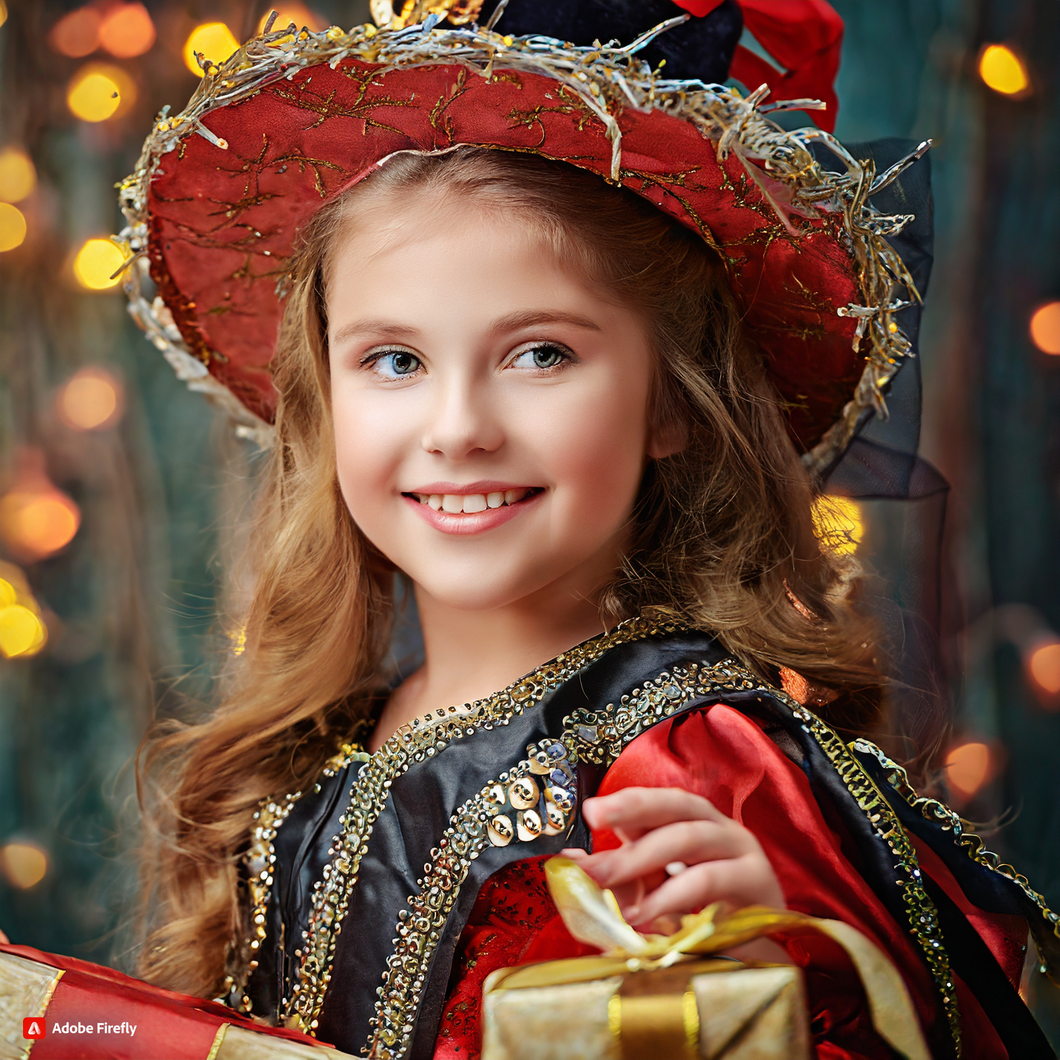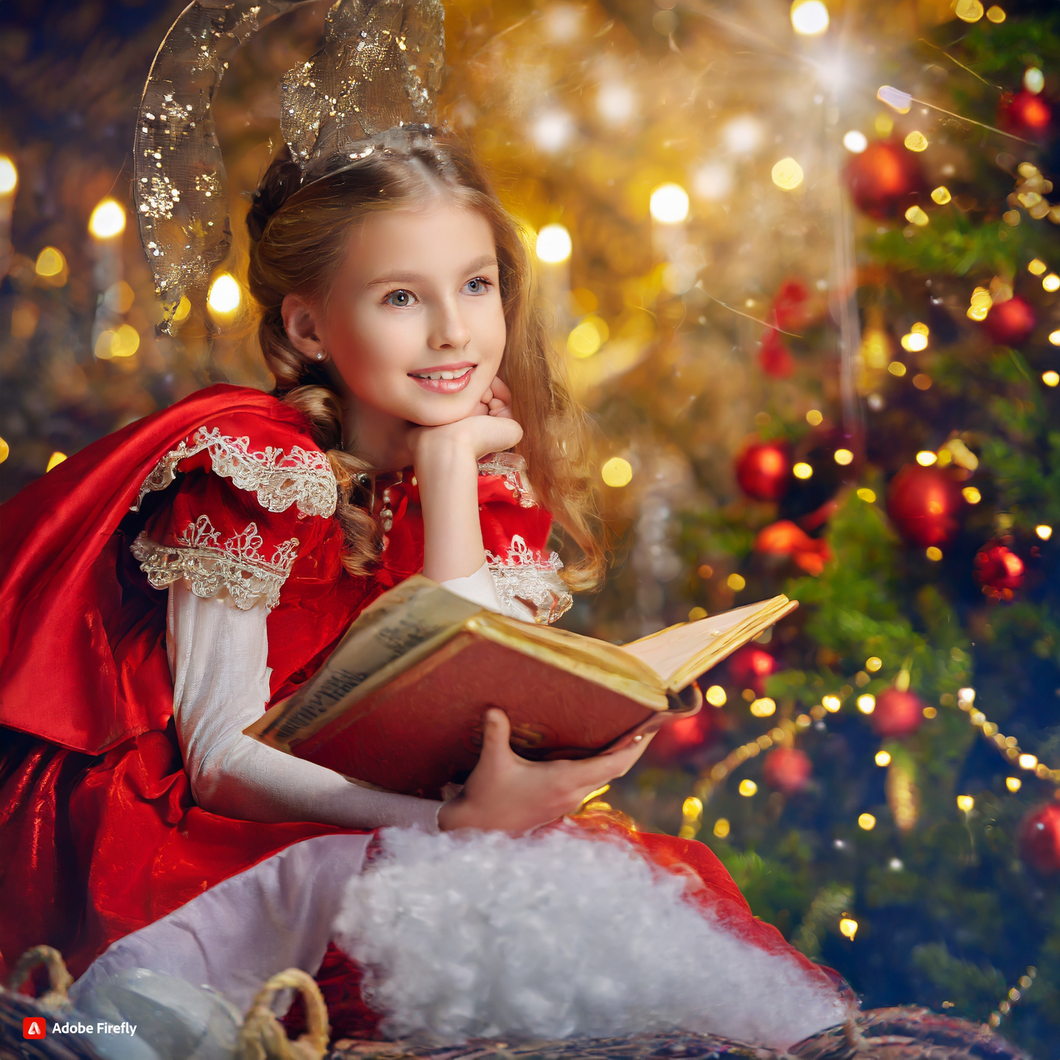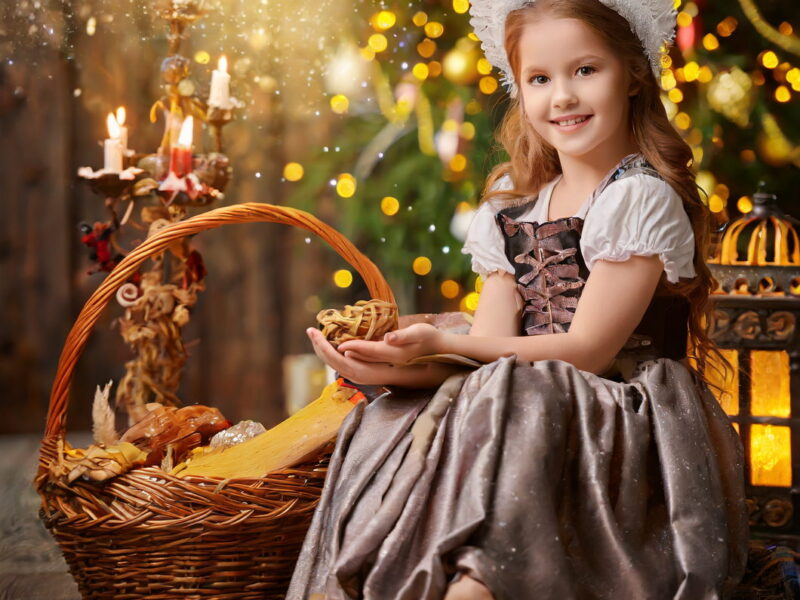Introduction
European Festive Fairytales are a beloved tradition that has been passed down for generations. These enchanting stories are filled with magic, wonder, and heartwarming lessons that capture the spirit of Christmas. From the snowy landscapes of Scandinavia to the bustling cities of Western Europe, each country has its own unique holiday folklore that adds to the rich tapestry of European culture. These festive fairytales not only entertain, but also teach valuable lessons about kindness, generosity, and the importance of family and community. Join us as we explore the enchanting world of European Festive Fairytales and discover the magic of Christmas across the continent.
Magical Christmas Traditions in Germany: Exploring the Origins of the Nutcracker and Other Festive Fairytales
As the holiday season approaches, many of us are familiar with the classic Christmas stories and traditions that have become a part of our celebrations. However, have you ever wondered about the origins of these festive fairytales? In this article, we will take a journey through Germany and explore the magical Christmas traditions that have captured the hearts of people all over the world.
One of the most iconic symbols of Christmas is the Nutcracker. This wooden figure, with its distinctive jaw that can crack nuts, has become a staple in many homes during the holiday season. But where did this beloved character come from? The story of the Nutcracker can be traced back to Germany, where it originated as a fairytale written by E.T.A. Hoffmann in the early 19th century.
Hoffmann’s story, “The Nutcracker and the Mouse King,” tells the tale of a young girl named Marie who receives a nutcracker as a Christmas gift from her godfather. The nutcracker comes to life and takes Marie on a magical journey to defeat the evil Mouse King and his army. This story was later adapted into a ballet by Tchaikovsky, which has become a beloved Christmas tradition in many countries.

But the Nutcracker is not the only festive fairytale that originated in Germany. Another popular story is “Krampus,” a horned creature who is the opposite of Santa Claus. While Santa rewards good children with gifts, Krampus punishes naughty children by whipping them with birch branches. This dark and eerie tale has been a part of German folklore for centuries and is still celebrated in some parts of the country.
Another well-known Christmas tradition in Germany is the Advent calendar. This tradition dates back to the 19th century when German Protestants would mark the days leading up to Christmas by lighting candles or hanging religious images. In the early 20th century, the first printed Advent calendars were created, featuring small pictures or Bible verses behind each door. Today, Advent calendars have evolved to include chocolates, toys, and other treats, making the countdown to Christmas even more exciting for children and adults alike.
In addition to these festive fairytales, Germany is also known for its Christmas markets, or “Weihnachtsmärkte.” These markets, which originated in the late Middle Ages, are a staple of the holiday season in Germany. They are filled with stalls selling traditional food, drinks, and handmade crafts, creating a magical atmosphere that brings people together to celebrate the joy of Christmas.
One of the most famous Christmas markets in Germany is the Nuremberg Christkindlesmarkt, which has been held since the 16th century. This market is known for its traditional gingerbread, or “Lebkuchen,” and its iconic Christmas angel, the Christkind, who opens the market with a festive speech. The Nuremberg Christkindlesmarkt has become a must-visit destination for tourists during the holiday season, attracting millions of visitors each year.
As we can see, Germany has a rich history of festive fairytales and traditions that have become a part of Christmas celebrations all over the world. From the Nutcracker to Krampus, from Advent calendars to Christmas markets, these traditions have captured the imagination and hearts of people of all ages. So this holiday season, take a moment to appreciate the magic and wonder of these German Christmas traditions and create your own festive fairytale. Frohe Weihnachten! (Merry Christmas!)
From Saint Nicholas to Santa Claus: The Evolution of Christmas Legends in the Netherlands and Belgium
As the holiday season approaches, many of us are familiar with the jolly figure of Santa Claus, who brings gifts to children on Christmas Eve. But did you know that the origins of this beloved character can be traced back to the Netherlands and Belgium? In this article, we will explore the evolution of Christmas legends in these two European countries, from the traditional figure of Saint Nicholas to the modern-day Santa Claus.
The story of Saint Nicholas, also known as Sinterklaas in Dutch, dates back to the 4th century. He was a Christian bishop who was known for his generosity and kindness towards children and the poor. According to legend, he would secretly leave gifts and treats for children on the eve of his feast day, December 6th. This tradition of gift-giving on Saint Nicholas’ feast day is still celebrated in the Netherlands and Belgium, with children leaving out their shoes or stockings in hopes of receiving presents from Sinterklaas.
Over time, the legend of Saint Nicholas evolved and merged with other Christmas traditions, such as the Germanic figure of Odin, who was said to ride through the sky on a white horse and leave gifts for children. This fusion of traditions gave rise to the character of Sinterklaas as we know him today – a white-bearded, red-robed bishop who travels on a white horse and brings gifts to children on December 5th or 6th.

But it wasn’t until the 19th century that Sinterklaas truly transformed into the modern-day Santa Claus. In 1823, the famous poem “A Visit from St. Nicholas” was published in the United States, which described Santa as a jolly, plump man who traveled on a sleigh pulled by reindeer. This poem, also known as “Twas the Night Before Christmas,” was heavily influenced by the Dutch and Belgian traditions of Sinterklaas, and it helped to popularize the image of Santa Claus in America and around the world.
As the legend of Santa Claus spread, he began to take on different forms and names in different countries. In the Netherlands and Belgium, he is still known as Sinterklaas, but in other parts of Europe, he is called Father Christmas, Père Noël, or Weihnachtsmann. However, no matter the name, the essence of Santa Claus remains the same – a jolly, gift-giving figure who brings joy and magic to children during the holiday season.
Today, the celebration of Christmas in the Netherlands and Belgium is a blend of both traditional and modern customs. On December 5th, children eagerly await the arrival of Sinterklaas, who is said to travel from Spain (where he lives) to the Netherlands on a steamboat. He is accompanied by his helpers, known as Zwarte Pieten (Black Petes), who are said to help him with his gift-giving duties. The arrival of Sinterklaas is celebrated with parades and festivities, and children leave out carrots and hay for his horse and cookies for Sinterklaas and his helpers.
On Christmas Eve, families gather to exchange gifts and enjoy a festive meal together. In Belgium, it is also common to attend a midnight mass on Christmas Eve. And just like in many other countries, Christmas trees and decorations are a common sight in homes and public spaces.
In conclusion, the evolution of Christmas legends in the Netherlands and Belgium is a fascinating journey that has given rise to the beloved figure of Santa Claus. From the humble beginnings of Saint Nicholas to the modern-day celebrations of Sinterklaas and Christmas, these traditions continue to bring joy and magic to people of all ages. So this holiday season, let’s remember the origins of Santa Claus and the rich history behind this festive fairytale.
Festive Fairytales in Eastern Europe: Discovering the Enchanting Folklore of Poland, Czech Republic, and Hungary
As the holiday season approaches, many of us are drawn to the magic and wonder of Christmas stories. While we may be familiar with the classic tales of Santa Claus and his reindeer, there is a whole world of festive fairytales waiting to be discovered in Eastern Europe.
Poland, Czech Republic, and Hungary are three countries rich in folklore and tradition, and their Christmas stories are no exception. These tales are filled with enchanting characters, heartwarming messages, and a touch of magic that will transport you to a winter wonderland.
In Poland, one of the most beloved Christmas stories is that of the Christmas spider. According to legend, a poor widow and her children were unable to decorate their Christmas tree, as they had no money for ornaments. On Christmas Eve, spiders spun webs all over the tree, creating beautiful silver and gold decorations. When the family woke up on Christmas morning, they were amazed by the sight and believed it to be a miracle. From then on, it became a tradition to hang spider webs on the Christmas tree for good luck and prosperity.
Another popular Polish tale is that of the Starman, who is said to visit children on Christmas Eve. He is often depicted as a tall, thin man dressed in a long, white robe and carrying a staff. The Starman brings gifts to children who have been good throughout the year, but also leaves a birch rod for those who have misbehaved. This tradition serves as a reminder to children to be kind and well-behaved, and to appreciate the gifts they receive. Read Bread Recipes.
Moving on to the Czech Republic, we find the story of the Golden Pig. According to this tale, a poor farmer and his family were struggling to make ends meet. On Christmas Eve, they decided to sell their last pig in order to buy food for the holiday. However, as they were walking to the market, the pig escaped and ran into the forest.
The family searched for hours, but could not find the pig. Just as they were about to give up, they stumbled upon a clearing where the pig was happily eating from a pile of gold coins. The family took the coins and were able to buy food and gifts for Christmas. From then on, it became a tradition to place a small golden pig ornament on the Christmas tree for good luck and prosperity.
In Hungary, the Christmas story of the Little Golden Calf is a popular one. It tells the tale of a poor shepherd boy who was visited by an angel on Christmas Eve. The angel gave him a golden calf and told him to take care of it, and in return, it would bring him good fortune. The boy took the calf home and cared for it, and soon his family’s fortune began to change. They became wealthy and were able to help others in need. The golden calf is now a symbol of generosity and kindness during the holiday season.
These are just a few of the many festive fairytales that can be found in Eastern Europe. Each one carries a message of hope, kindness, and the magic of Christmas. These stories have been passed down from generation to generation, and are an important part of the holiday traditions in these countries. Read easy Healthy Lunch for Weight Loss.
So this holiday season, as you gather with your loved ones and share stories, take a moment to discover the enchanting folklore of Poland, Czech Republic, and Hungary. Let these tales transport you to a world of wonder and remind you of the true spirit of Christmas.
Q&A – European Festive Fairytales
1. What are some popular European Festive Fairytales?
Some popular European Festive Fairytales include “The Nutcracker” from Germany, “A Christmas Carol” from England, and “The Little Match Girl” from Denmark.
2. How do these fairytales differ from traditional Christmas stories?
European Festive Fairytales often have a more magical and fantastical element to them, with talking animals, enchanted objects, and other supernatural elements. They also tend to have a stronger focus on the spirit of giving and the importance of family and community during the holiday season.
3. Are these fairytales still relevant in modern times?
Yes, these fairytales are still widely read and enjoyed today. They have become a beloved part of European holiday traditions and continue to be adapted into various forms of media, such as movies, plays, and ballets. They also serve as a reminder of the rich cultural heritage and traditions of Europe.
Conclusion for European Festive Fairytales

In conclusion, European Festive Fairytales are a rich and diverse collection of Christmas stories that have been passed down through generations. These tales not only entertain and enchant, but also provide a glimpse into the cultural traditions and beliefs of different European countries.
From the jolly figure of Santa Claus in Western Europe to the more mystical figures of the Yule Lads in Iceland, these stories showcase the unique and varied ways in which Christmas is celebrated across the continent. Whether it’s through heartwarming tales of generosity and kindness or spooky legends of mischievous spirits, European Festive Fairytales add a touch of magic and wonder to the holiday season.
Please follow us on linkedin. You can learn all best canadian food recipes you can check our Culinary 1TouchFood Youtube and Telegram 1TouchFood page. Don’t forget Fighting Obesity Magazine and Radio Cooking.

